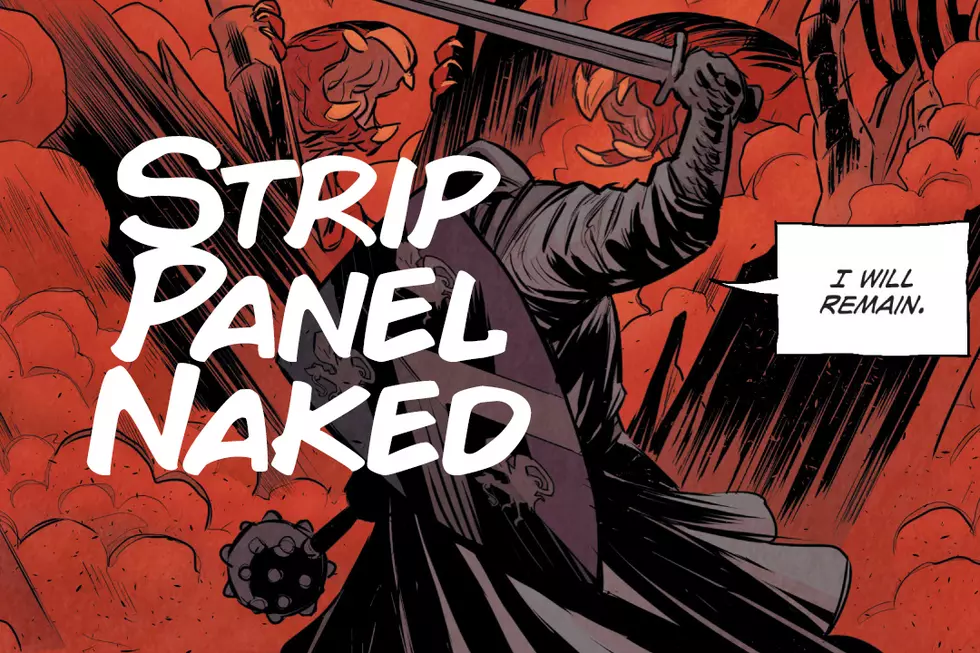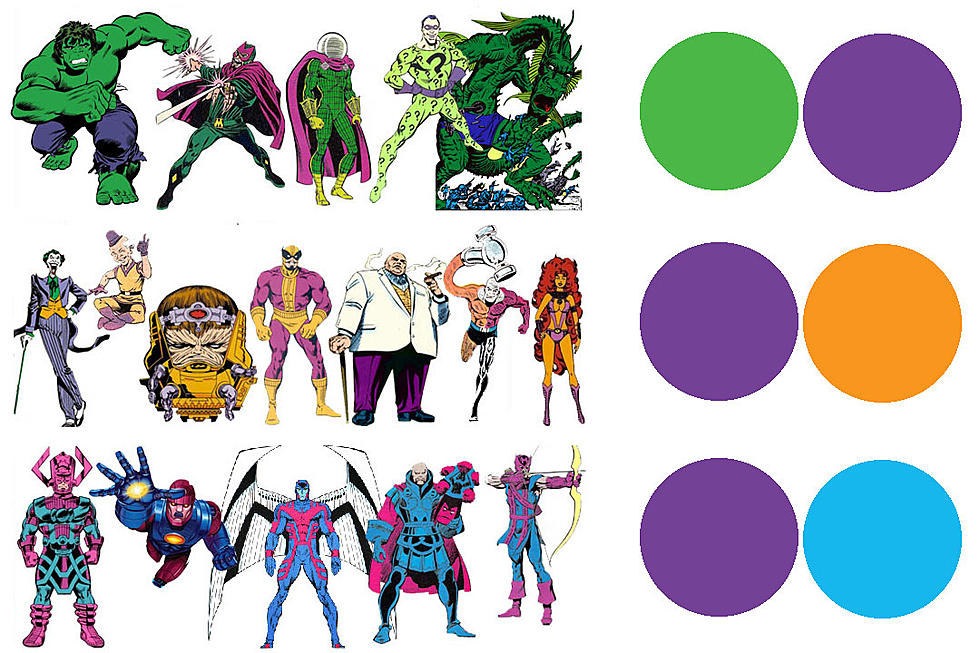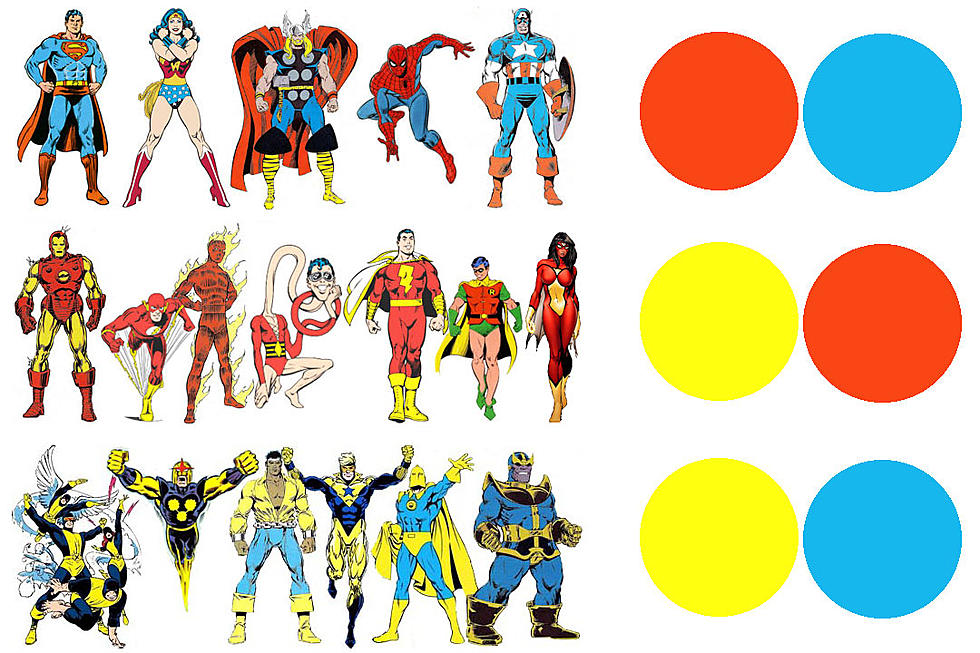
Decoding #TheDress: Color Artist Nathan Fairbairn Makes Sense of the Madness
The Dress. For a little while there, in between one story and the next, the dress was all anyone seemed to be talking about --- or more specifically, a picture of a dress. Some people swore that the dress in the picture was white and gold; others felt certain it was blue and black. Color, which we tend to think of as a matter of fact, is really a matter of perception --- but, "it all depends how you look at it" is an unsatisfying answer to a question that nearly tore the internet in two.
Thankfully there are people whose whole business is color, among them the talented artists who color our comics, applying color theory to create space, time, mood, and emotion on the page. One such artist is Nathan Fairbairn, whose projects include Multiversity and Wonder Woman: The Trial of Diana Prince. Fairbairn was as confounded by the mysteries of The Dress as anyone, but as an expert in his field he had a better idea than most of us on how they might be decoded.
Reproduced here in full, from Fairbairn's blog, is his assessment of #TheDress.
"Give me mud and I will paint the skin of Venus, provided I can paint around her the colors I want." — Eugene Delacroix
Okay, to begin, let’s look at the goddamn thing.
If you want to find out what color something in a photo is, it’s actually pretty simple in Photoshop. Just use the eyedropper tool. Now, on an image as grainy as this, it’ll be tough to get a reading as there’ll be a lot of variation from pixel to pixel. In order to get a better read, you want to select a more or less uniform area of color and run Filter > Blur > Average. You should get something like this:
Let’s just isolate those colors, shall we?
So there you have it! The dress is objectively a light blue (maybe … Wedgewood Blue?) and a dull, grayish brown (Gray Quartz?). Problem solved, right? All we had to do is isolate the colors!
Well, no.
Color perception is weird, but the most important thing to remember is that colors don’t exist in a vacuum.
Colors are all perceived relative to the tone, value and saturation of the colors around them. Contrast is the key.
Simultaneous contrast is the phenomenon whereby surrounding contrasting values can make colors appear lighter or darker in relation.
Simultaneous contrast makes the center strip in the image below appear to shift from dark to light. In fact, it doesn’t change. It remains the same middle value throughout.
"Black clothes make the flesh look whiter. Whites, on the other hand, darken its color." — Leonardo da Vinci
In addition to simultaneous contrast, there is color contrast, tonal contrast, contrast of range and complementary contrast.
The effect of complementary colors is that when we perceive a color, we simultaneously see its complement.
Stare at the red circle for 60 seconds then let your eyes drift up to the white space:
Did you see a complementary green afterimage ghosted in the white space?
The complement of yellow is blue. Stare at this image for 30 seconds.
(I sampled this yellow from the background of the dress photo)
The neutral grey square took on a blue tinge, right? Now repeat with the yellow’s complementary blue.
Was the effect reversed? Did the grey square take on a yellow cast?
The grey square is the same color in both images. Your perception is what changes.
For painters, the most practical effect of complementary contrast is that you can make a color seem brighter than it is in isolation by juxtaposing it with its complement. (E.g.: If you want the yellow of that taxi you painted to pop, put a bright blue delivery van behind it.)
So, knowing all of that, let’s move on.
It’s safe to assume that there is no one out there arguing that the dress is light blue and grayish brown, even though those are the actual colors it is. Why is that? What are we really talking about when we ask “what color is the dress really?”
The color of an object is determined by the following: its local color; its tonal color; reflected color; and the color of the intervening atmosphere.
What does that mean? Well, let’s define our terms:
"Local color" is the actual color of an object in clear sunlight. Red apples, green grass, etc. This is what we all want to find out here. We’re all dying to know what the dress’s local color is.
(In other words, if the dress had been photographed in clear sunlight, we wouldn’t be having this conversation.)
"Tonal color" is just a darker or lighter tone of the local color, depending on how much light it reflects. As the planes of an object turn away from and recede from a light source, it gets darker in tone.
Tonal color is very strongly influenced by “reflected color,” which is the ambient or secondary light that bounces around us at all times.
Consider the following example:
Is this lemon yellow or green? Does the strong blue reflected color make the lemon a lime?
For the picture of the dress, I assume the camera is very close, so we don’t need to worry about the effects of intervening atmosphere. (However, the study and observation of atmospheric perspective is certainly interesting and rewarding. If nothing else, I promise you’ll never be able to drive through the mountains again without seeing everything differently after.)
The last thing to remember (something I had ignored until my initial hypothesis was shown to be incorrect by someone posting a better photo of the dress) is that when the color of light changes, so does the color of an object. If you shine a blue light on a white object, the object appears blue. If you go into a darkroom and turn on the red light, everything is red.
So. Here’s what I think is happening with this dress photo and why there is such confusion:
Hypothesis #1
We have a white and gold dress that is in shadow in the foreground.
Its darker tonal color is being strongly affected by a good deal of reflected or direct blue light from somewhere out of frame.
Meanwhile the bright background — because of simultaneous contrast — is tricking the eye into seeing the dress as darker than it is (black).
The yellows in the background are augmenting the perception of yellow’s complement, blue (which already exists due to the blue light that is hitting it).
Hypothesis #2:
We have a black and blue dress that is being hit by strong orange incandescent lighting (and horribly exposed/white balanced)
The rich blues have gotten washed out and are reading as much lighter and more de-saturated because of the strength of the yellow light hitting them.
The blacks have been pushed toward grey by overexposure and the lighter tonal color of those blacks is being strongly affected and pushed towards brown by the quality of the light.
Conclusion:
So which is it? (Keeping in mind that I used exactly the same colors on the brightly lit blue dress as I used to color the shadowed white dress.)
The goddamn dress turns out to be blue and black, but it’s completely understandable, given our knowledge of color and the way we perceive it, that many (including myself) thought it was white and gold.
What I find even more fascinating than the chance to apply years of study of color theory is what this whole episode says about how we humans perceive reality and the cognitive biases we use to interpret it. This is the wrong post for that, but here’s a pretty great take on that aspect.
Acknowledgements:
I’ve read at least a dozen books on color theory, but the one I come back to and reread at least once a year is The Book of Color, by José Parramón. It’s sadly out of print now but you can still find it from used book sellers. It was re-edited and shortened and is still in print as, simply, Color Theory. I pinched the photo of the lemon from the former, and pretty much all the knowledge and quotations, as well.
For artists looking for a more practical guide to applying the lessons of color theory, I also highly recommend James Gurney’s Color and Light. It’s indispensable.
You can read more of Nathan Fairbairn's thoughts on art and color on his Tumblr, including his posts on the difference between RGB and CMYK; his post on color process for Grant Morrison and Frank Quitely's Pax Americana; and his post on the cover process for Grant Morrison and Chris Burnham's Nameless. You can follow him on Twitter @nathanfairbairn.
The drawing of the dress is inspired by a piece by the amazing Claire Hummel, and an earlier version of this article used Claire's drawing. You can find Claire Hummel online at ClaireHummel.com, and follow her on Twitter @shoomlah.
More From ComicsAlliance
![When Everything Is Pink, Nothing Is Pink: Sarah Stern On Color And Creativity [Interview]](http://townsquare.media/site/622/files/2017/03/Cindersong-feat.jpg?w=980&q=75)








